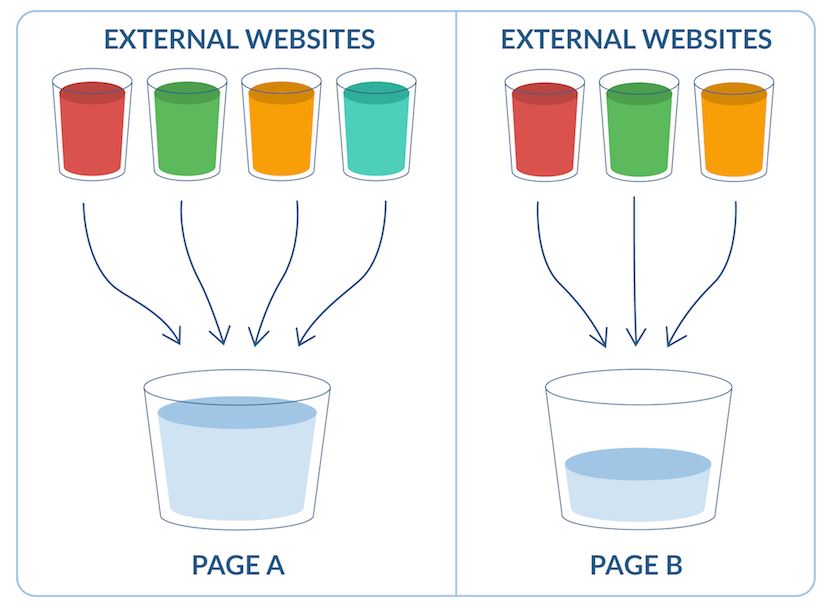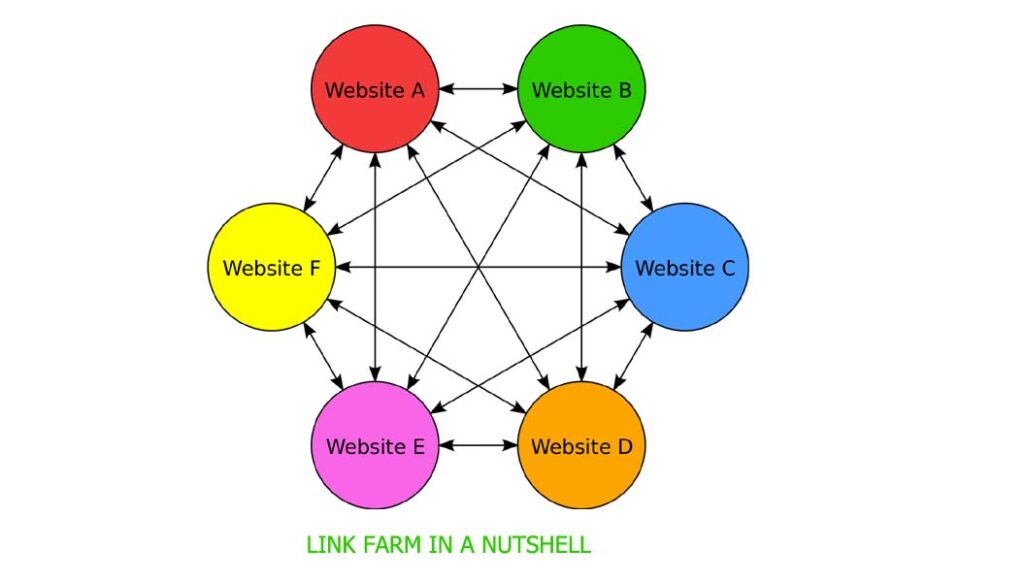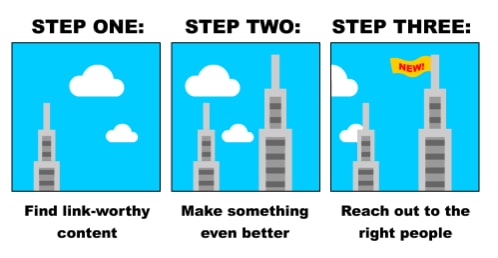What is link building?
As a hot topic in the WRD office, and across the entire SEO community for that matter, we thought we would delve into some natural link building techniques (particularly the slightly less obvious practices) and show you how you can use them to benefit your own website.
Link building is the process of acquiring links from other, usually relevant sources across the internet, to your own or your client’s website.
There are many different ways of achieving this, varying in difficulty from simply adding your website to local directories to in-depth link analysis.
Most SEOs will agree that this is often one of the most time-consuming areas of the job.
Does Google penalise link building practices?
When Google began, their primary method of ranking websites in SERPs was based on the number of links pointing to the website in question. This, naturally, tempted SEOs of the time to find ways to gain artificial links in an attempt to improve their search engine rankings.
As Google has grown older, its algorithms have also grown wiser and are much more sophisticated than previously.
Some link building tactics can occasionally work but are against Google’s terms of service (see the section at the foot of this article “What to avoid when building natural links”).
These tactics can lead to the website in question becoming penalised, or even de-indexed. For this reason, it is incredibly important to keep a healthy and natural backlink profile.
In other words, earn your links through fantastic content and hard work.
The importance of backlinks to SEO
A backlink is an incoming hyperlink from one website to another.
In simplified SEO terms, there are two main ways in which search engines use backlinks; to discover new web pages to crawl and to aid in determining how well a page should rank. The first point is fairly self-explanatory, however, the second is where people tend to run into problems.
When another website links to yours, it suggests that the content provided on your website is useful to readers and therefore represents a “vote of confidence” from one website to another.
As Google’s algorithms have become more complex, backlinks have in turn become less important to a website’s ranking, as we will explain later on.
A strong backlink profile does however still contribute to improvements in your website’s domain authority and this, in turn, means your website is more likely to rank in search engine results pages (SERPs). One simple way to think about this is using the analogy of “link juice”.
Think of your website as a glass, when external websites link to your website, it shares a little of its “link juice” with you and your glass becomes fuller which is a positive signal to search engines. By the same token, however, when you link to another website, you share a little link juice with them, and your glass becomes less full.

Bear in mind though, this does not mean you shouldn’t link to any other websites, as this is all a part of a natural, varied backlink profile.
You can, however, minimise irrelevant links and focus on including ones that will benefit your users’ experience whilst on your website or build credibility for your brand.
Google is all about providing users with the very best experience, so why include too many, confusing and spammy links when you could streamline their experience and provide quality information.
An example of when to link out could be linking to a useful resource, an article featuring your brand or a testimonial of someone having used your product or service.
The weight different links hold in Google’s eyes
As mentioned previously, domain authority is seen to play a role in the way Google ranks websites and therefore, when a website with high domain authority, such as a reputable tabloid or global brand, provides an external link to another website, Google values it as a highly reliable signal that the website being linked to is also credible and useful.
Essentially, their link juice is worth more.
Having a large number of links from very low authority or inappropriate websites on the other hand, can be viewed as spammy and your website could be associated with others of this low quality and suffer in the SERPs.
As a rule of thumb, as long as you refrain from paying for any links, practicing “link farming” or any of the black-hat SEO tactics outlined at the foot of this article, you shouldn’t have to worry too much about this.

3 Often overlooked genuine link building techniques:
Providing testimonials & partnership badges
One great way to earn genuine links and show your support for other businesses is to provide them with testimonials or partnership badges.
Have you recently worked with a business who went above and beyond to support you in your work, or have you just finished a project working alongside a firm that you feel deserve some recognition?
Why not send them over a testimonial or provide them with a partner badge, more often than not, they will link back to your site to provide authenticity to their own users, so really, it’s a win-win.
This method is a fantastic way to not only build your link profile but also your relationships, because who doesn’t love a little praise?
One thing to remember though, this page should not be used for the sole purpose of gaining a link and must include valuable and genuine information about your experience/partnership with the company.
Use the “Skyscraper” technique
Creating great, shareable content is a given, but using the Skyscraper technique it is possible to earn and generate even more natural backlinks to your website
In a nutshell, this link building technique is all about finding popular, well-respected content and making it even better.
To get started you should begin some research and highlight articles that are discussing similar topics to what you wish to write about, and importantly, ranking well for it.
Once you have located two or three of these pieces, you should begin auditing each one’s backlink profile to identify which has the strongest inbound link presence. This can be done using tools like SpyGlass.
When you have decided which piece of content has attracted the largest number of shares and links, it’s time to revamp it.
You don’t need to be overly creative in order to earn links this way, just be accurate about the information you include, correct any previous mistakes and update any discrepancies as well as, of course, writing the new piece in your own unique style and using your own words.
Your finished product should feature outstanding design and be friendly to users and search engines alike.
Now comes arguably the most important aspect of using the skyscraper link building technique, asking for the links.
Refer back to your SpyGlass audit and export the linking domains from the competing content in question.
Once you have of course optimised your content from an SEO perspective and ensured everything is as it should be, you can now reach out to the people behind the domains in question.
During this outreach, you’ll find it much more successful to create personalised emails tailored to each website, rather than employing a blanket approach.
We suggest a gentle approach is undertaken such as informing them that your new piece is actually a little more specific and up to date than the article they currently link to and explaining how sharing more accurate information would certainly be of benefit to their users’ experience on their website.

Turn brand mentions into links
Perhaps the easiest link building approach mentioned in this article, yet often overlooked none the less, is turning brand mentions into links.
You may think the thought of scouring the internet for hours on end in hopes of finding unlinked brand mentions sounds a little dull, and we couldn’t agree more. That’s where tools like SEMRush come into play.
You are able to track yours (or your client’s) brand as a project within SEMRush, allowing you to create analytical dashboards that beautifully compliment tools such as Google Analytics.
One of the most efficient ways to use the software when developing links is for all-important brand monitoring.
SEMRush allows you to track any time another website mentions your brand (up to 6 brand variations are possible, with the option to exclude certain words if necessary).
As you can see, you are shown a snippet of the anchor text along with multiple other pieces of valuable information.

You will note, the tool highlights whether the mention contains a link or not, in this case, it does not yet.
When a new mention appears that lacks a hyperlink to your website, you can simply reach out and ask if they would mind including a link where they have mentioned the company, more often than not, if you get a response, people are happy to do this for you if they deem your content of high quality.
What to avoid when building natural links
The following link building techniques are just some examples that should be avoided and can be seen as behaviour that manipulates links to your website in Google’s eyes.
- Buying, selling or exchanging links in return for money/work/products.
- Excessive exchanges of links e.g. “if you link to my website, I’ll link to yours”.
- The use of automated programmes with the purpose of building links.
- Large scale “guest posting” campaigns with keyword-rich anchor text.
- Links that feature over-optimised anchor text in articles or other publications such as other press releases.
- Forum comments with optimised linking.
Click for more information on Google’s guidelines when it comes to earning links.
Whilst a natural and sustainable link profile is one component of SEO, there are many other areas that should be considered when looking to create a fully comprehensive SEO strategy.
We hope this blog has assisted you in your search for effective (and often overlooked) link building practices and techniques; if you wish to find out how we could support your business with SEO consultancy, or another service then please do not hesitate to get in touch with a member of our team who will be more than happy to discuss your requirements.



